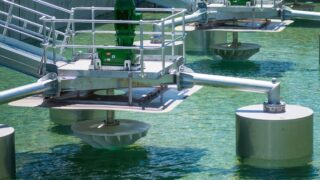Parametric Design: What is it & How is it Shaping The Industry?
Parametric design is the future of engineering.
Just as technology has advanced in every other industry, parametric design is shaping how engineers conceive and execute their designs. It incorporates more factors into the design process, making it easier to manage complexity while still providing opportunities to improve the end product.
The benefits are clear: parametric design can result in better-defined costs within a build, effective management of the process, and improved overall design.
But what is parametric design? And how is it changing the engineering industry? Let’s dive in to the details to find out how it affects the future of engineering.
What Is Parametric Design?
Parametric design is a technique in which engineers use algorithms to create complex, customized products or structures. This process allows designers to input a set of parameters, or variables, that the algorithm then uses to generate a unique solution.
For example, an engineer might input the dimensions of a site, the amount of sun exposure it receives, and the type of soil present. The algorithm would then generate a custom-built solar panel that is optimized for that specific site.
The parametric design process is flexible and can be applied to a wide range of problems, from engineering to architecture to product design.
On the other hand, generative design is a similar technique that focuses on finding the optimal solution for a given problem, rather than customizing a solution to specific inputs.
The Inspiration of Nature Through Parametric Design
Parametric design has its roots in nature. The inspiration came from the study of biological systems, which are themselves parametric.
For example, a tree is parametric: it has a trunk, branches, leaves, and roots, all of which are generated by a set of parametric equations. These equations take into account the tree’s environment, such as the amount of sun and water available, to generate a unique solution that is optimized for that particular tree.
In the same way, parametric design takes into account all of the variables in a design problem to generate a unique solution.
Technology allows engineers to analyze and mimic nature’s complexity in the digital world, and the potential applications are endless. With this data, it can be used in applications from architectural designs to aerospace engineering.
5 Reasons Why Parametric Design Is Changing The Engineering Industry
Parametric design is changing the engineering industry for the better. Here are five reasons why:
Parametric Design Incorporates More Factors Into the Design Process
In the past, engineers would design a product or structure and then test it to see if it met all the requirements. This was a time-consuming and often frustrating process, as it was difficult to account for all of the variables in a design.
With parametric design, engineers can input all of the necessary variables into the parametric algorithm. This ensures that all of the requirements are met before a prototype is even created.
Not only does this save time, but it also saves money, as prototypes are often expensive to build.
It Makes It Easier To Manage Complexity
As parametric design incorporates more variables into the design process, it also makes it easier to manage complexity. This is because parametric algorithms can generate complex solutions that would be unlikely – or even impossible – for a human to design.
Enhanced Opportunity To Improve Design
Improving the overall design is another benefit of parametric design. As the design takes into account more variables, it provides a greater opportunity to find ways to improve the design.
Before parametric design, engineers would often make small improvements to a design over time, but this advanced method allows for more significant improvements to be made early in the design process.
Well Defined Costs For Design Build Projects
It is often difficult to estimate the cost of a project as the design often changed during the build process. This is no longer an issue with parametric design, as the algorithm takes into account all of the variables in a design at the early stages of the project.
This means that the cost of a project can be well defined from the outset, which makes it much easier to budget for.
Effective Management Of The Design Process
Designing built infrastructure is a complex process, but it can be more effectively managed with the right parametric design software. There are several software programs available that incorporate parametric algorithms, each with its advantages and disadvantages.
The most important thing is to use design software that meets the specific needs of your project.
Parametric Design Is Changing the Industry for the Better
Whether you’re an engineer, architect, or product designer, parametric design is a valuable tool that can save you time and money. You can create complex solutions that would be impossible to design by hand in the same amount of time and effort.
If you’re not already using intuitive parametric design software, now is the time to start. With Transcend Design Generator, generating preliminary engineering designs is easy to use and can be applied to a wide range of infrastructure problems. Try it for yourself today and see how Transcend Design Generator can change the way you work.







